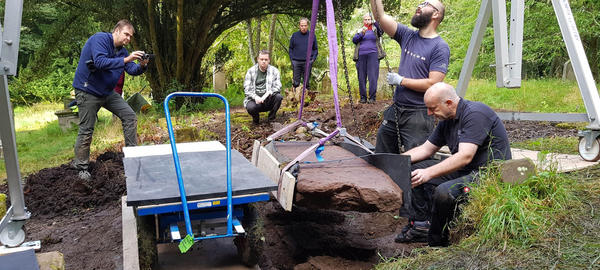The stone, thought to have been carved about 1,200 years ago, is decorated with a number of Pictish symbols and is said by experts to be of national importance.
It is believed the stone, discovered at an early Christian church site in Dingwall, originally stood at more than two metres high.
It now measures around 1.5 metres, having been broken over the years and been reused as a grave marker in the 1790s.
Anne MacInnes, from the North of Scotland Archaeological Society, was the first to recognise the stone while carrying out a survey at the church site.
She said: “I was clearing vegetation when I spotted the carving. I really couldn’t believe what I was seeing.”
The find was verified by archaeologists from Highland Council and Historic Environment Scotland, before being safely removed from the site by specialist conservators on Thursday.
It will now be professionally conserved with a view to ultimately putting it on public display at a Highland museum or other suitable venue.
Designs on the stone include several mythical beasts, oxen, an animal-headed warrior with sword and shield, and a double disc and z rod symbol.


 … Read More
… Read More